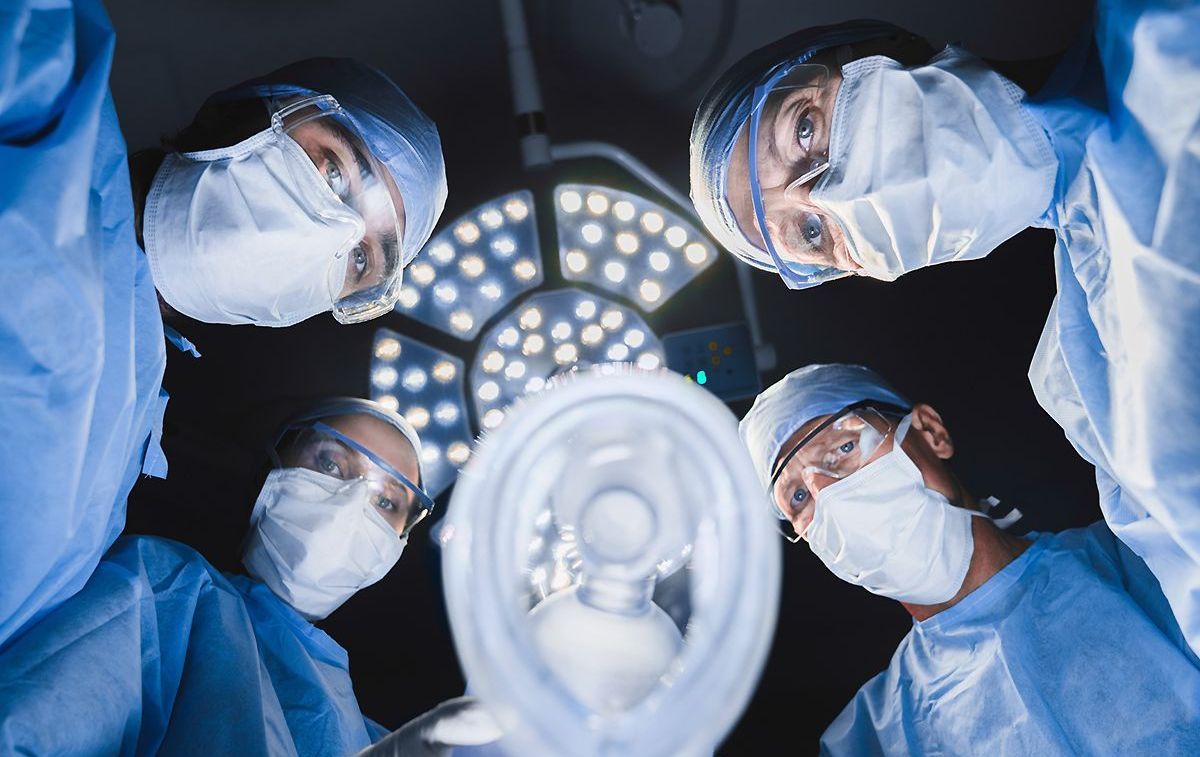Modern Anesthesia: How Cutting-Edge Advancements Ensure Patient Safety

Few medical advancements have revolutionized patient care like anesthesia. Once associated with fear and uncertainty, anesthesia has transformed into a sophisticated practice driven by cutting-edge technologies and techniques that give patients the peace of mind of enhanced safety – inside and beyond the operating room.
Anesthesia is a crucial part of surgery that helps patients stay unconscious and pain-free during medical procedures. As surgeries become more complex, the role of anesthesia has expanded beyond just putting patients to sleep. It now involves carefully monitoring and managing patients throughout the entire surgical process
Let's take a closer look at how anesthesia has evolved over the years and the positive effects it has had on patient safety.
Types of Anesthesia in Plastic Surgery
When it comes to plastic surgery procedures, different types of anesthesia are used to ensure your comfort and safety. Let's explore the main types you might encounter:
General Anesthesia: The Deep Sleep
General anesthesia is often used for major plastic surgeries like tummy tucks, facelifts, extensive body and breast surgeries. Here's what you need to know:
- You're completely unconscious during the procedure
- It's administered through an IV and may require a breathing tube
- Ideal for longer, more complex surgeries
- An anesthesiologist monitors you throughout the procedure
Regional Anesthesia: Numbing Larger Areas
Regional anesthesia, including nerve blocks, is common in plastic surgery for procedures like breast augmentation or rhinoplasty. Key points:
- Numbs a specific area of your body
- You may remain awake but feel no pain
- Can provide pain relief for hours after surgery
- Often used in combination with sedation
Monitored Anesthesia Care (MAC): The "Twilight" Zone
MAC, or twilight sedation, is popular for less invasive plastic surgery procedures like eyelid surgery or minor facial enhancements. Here's what to expect:
- You're relaxed and drowsy but can be easily awakened
- Administered through an IV
- Often combined with local anesthesia for added comfort
- Quicker recovery compared to general anesthesia
Local Anesthesia: Pinpoint Pain Relief
Local anesthesia is used for minor plastic surgery procedures like mole removal or small facial surgeries. Important points:
- Numbs a small, specific area
- You remain fully awake and alert
- Minimal side effects
- Often combined with oral sedatives for added relaxation
Your plastic surgeon and anesthesiologist will work together to determine the most suitable type of anesthesia for your specific procedure, taking into account your medical history and personal preferences.
The Milestones Towards Safer Surgeries
Anesthesia has come a long way over the years, making medical procedures much safer for patients. In the beginning, using anesthesia was risky and uncertain. When ether was first used as an anesthetic in 1846, people were both excited and scared. They had a lot of questions: "What are the dangers of using anesthesia? Is it safe?"
The early anesthetic drugs were strong, but doctors didn't fully understand how they worked or how to use them properly. There was a lot of unpredictability when it came to administering anesthesia back then. Patients didn't know what to expect or if they would be safe during their procedures.
Fortunately, medical science has made tremendous progress over the past 175 years. Anesthesia has become much more reliable and predictable. Anesthesiologists now have a deep understanding of how anesthetic agents affect the body, and they can carefully monitor and control the administration of anesthesia to keep patients safe and comfortable throughout their medical treatment.
The evolution of anesthesia safety has been a crucial part of the development of modern, high-quality healthcare that we have access to today. Patients can now undergo complex procedures with the confidence that anesthesia will be administered expertly and with their well-being as the top priority.
The landmark moments in safer anesthesia:
New Laws and Guidelines for Better Care
As anesthesia became more common for medical procedures, the government and professional groups stepped in to create laws and guidelines to help ensure patient safety. Organizations like the American Society of Anesthesiologists started developing rules and best practices that anesthesia providers must follow. These important regulations are still used today to protect patients.
Monitoring Equipment Innovation
Over the decades, the development of monitoring equipment marked another significant milestone. Once, anesthesiologists relied on simple methods to gauge patient well-being. Today, sophisticated technology helps track vital signs continuously. This advancement ensures that any complications that may arise can be quickly identified and addressed in real-time.
Advances in Anesthetic Medications
In the 1960s, a medication called halothane came onto the scene, which was much less risky for patients compared to earlier anesthesia options. This was a big step forward. Then in the 2000s, anesthesiologists gained the ability to customize the anesthesia plan for each individual patient based on their unique needs.
This progress has been driven by extensive research and the dedication of medical pioneers in the field of anesthesiology who have helped transform anesthesia into a much safer and more personalized part of modern healthcare. Patients can now undergo procedures with greater confidence that every precaution is being taken to protect their well-being.
Smart Sedation: Tech Innovations Reshaping Anesthesia Safety
Monitoring Systems: Keeping Patients Safe During Surgical Procedures
Advanced monitoring systems provide anesthesiologists with detailed insights into a patient's health status during a procedure. Including:
- Heart Rate: Monitoring the heart's rhythm and speed to detect any irregularities.
- Respiratory Rate: Assessing breathing patterns to ensure adequate oxygen intake.
- Blood Pressure: Keeping an eye on blood pressure levels to prevent complications.
- Oxygen Saturation: Measuring the amount of oxygen in the blood, which is crucial for patient stability.
This continuous stream of data enables the surgeon and their team to make quick, informed decisions. If any abnormalities arise, they can take immediate action to address potential issues.
Capnography: A Safety Net for Breathing
Capnography is like a high-tech guardian for your breathing during surgical procedures. This tool measures the carbon dioxide (CO2) in your breath, providing surgical teams with crucial information about how well you're breathing.
Here's why capnography is so important:
- It confirms proper breathing tube placement, ensuring oxygen reaches your lungs.
- It provides real-time feedback on every breath a patient takes.
- It helps detect breathing problems quickly, allowing for immediate action.
Capnography works by showing a waveform on a screen, much like a heart monitor shows your heartbeat. This waveform, along with a number called end-tidal CO2, tells surgeons if your breathing is normal or if there's a problem. By using capnography, medical teams can keep a constant watch on your breathing, making procedures safer and giving you peace of mind.
Automation: Precise and Reliable Anesthesia Dosing
Automation is becoming more common in anesthesia delivery. This means machines can help provide the exact amount of personalized dosing per patient and minimize the chances of human error. Target-Controlled Infusion (TCI) pumps have revolutionized the way doctors keep patients comfortable and safe during medical procedures.
Here's how TCI pumps work:
- Personalized dosing: The doctor enters information like your age, weight, and height into the pump.
- Smart calculations: The pump uses complex math models to figure out the perfect amount of anesthesia for each patient.
- Continuous adjustments: Every 10 seconds, the pump recalculates and adjusts the dose to maintain the right level of anesthesia
- Precision control: Instead of guessing, anesthesiologists can target specific drug concentrations in your blood or brain.
Benefits of TCI pumps:
- Safer anesthesia: They help avoid giving too much or too little medication.
- Faster recovery: Patients often wake up more quickly after surgery.
- Improved comfort: The steady drug levels can mean fewer side effects
Looking Forward: What’s Next for Anesthesia Safety
As we look to the future of anesthesia and patient safety, there's a lot to be excited about. Anesthesiology has always been at the forefront of patient safety, and that commitment continues to evolve and improve.
In the coming years, we can expect to see:
- More advanced monitoring systems using artificial intelligence to keep patients even safer during procedures.
- Improved team-work and communication in the operating room, with tools like checklists and emergency manuals becoming standard practice.
- A focus on the entire patient journey, from preparation before surgery to recovery afterward, not just during the operation itself.
- The use of telemedicine to help patients prepare for surgery and recover at home, making the process more comfortable and convenient.
- Efforts to make healthcare more environmentally friendly, including changes to anesthetic gases to reduce their impact on climate change.
- Better systems to identify and prevent errors, especially for patients who speak different languages or come from diverse backgrounds.
The goal of these advancements is simple: to make sure every patient receives the safest and best care possible. While anesthesia is already very safe, doctors and researchers are always working to make it even better. The future of anesthesia looks bright, with new technologies and approaches, including AI tools, all aimed at giving patients safe care and peace of mind.
Learn More About Patient Safety First at Dr. Sean Plastic Surgery!
Dr. Sean Saadat is a Beverly Hills Plastic Surgeon specializing in advanced facial and body rejuvenation techniques. In his practice, patient safety is paramount. Dr. Sean is highly trained in the latest techniques that adhere to rigorous certification processes, with a strong emphasis on ensuring patient safety at every step of the surgical experience. Learn more here.
Schedule a virtual or in-person consultation to discuss your empowering beauty goals with Dr. Sean: Text or Call (310) 269-7173 or Email: contact@drseanplasticsurgery.com










